
An unsuspecting toy fox was taken for a speedy ride by children at Milford Pre-school Plus in Hampshire as they tested their critical thinking skills and investigated zip lines.
The children were fascinated by the idea of a zip line after sharing The Lighthouse Keeper's Lunch by Ronda and David Armitage. In the book, a very long zip line is strung between Mr Grinling's home perched high on the cliffs and the lighthouse on the rocks in the sea below. It is used by his wife for delivering lunch each day in a basket clipped on to the wire.
‘As I was reading the book, I pointed out the zip line and we wondered how they got the zip line from the cottage all the way down to the lighthouse,’ says manager Sarah Rix. ‘It inspired some of the children to start thinking about making their own zip line in the setting and considering where would be best to put it.’
Sarah, who is a trained Forest School leader, regards her role as a facilitator. Through free play and regular Forest School sessions in the setting's woodland, children have plenty of time for new experiences, to follow their interests and develop their ideas over a period of time.
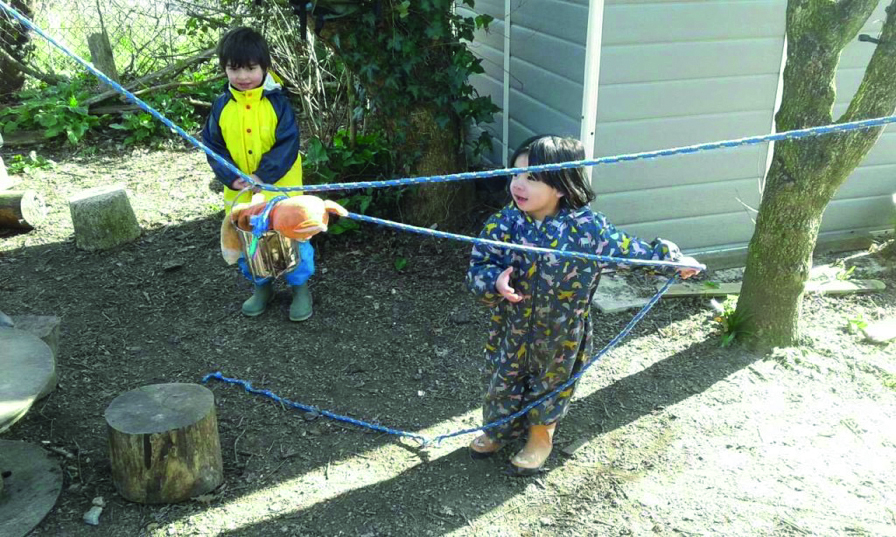
HOW DO THEY WORK?
Zip lines have been used for centuries. In ancient China, people used zip lines to cross rivers and dangerous places until they were replaced by bridges. They are still used today for the transportation of cargo and for fun, including mountaineering and in some playgrounds.
- A zip line needs to start at a higher point than it ends.
- It is not possible to travel up a zip line, only to descend from the top to the bottom of the slope.
- People and objects travel down zip lines because of the pull of gravity which makes things move towards the ground.
- Friction – caused when two things rub together – can be used to control the speed that an object travels down a zip line.
WHAT THE CHILDREN DID
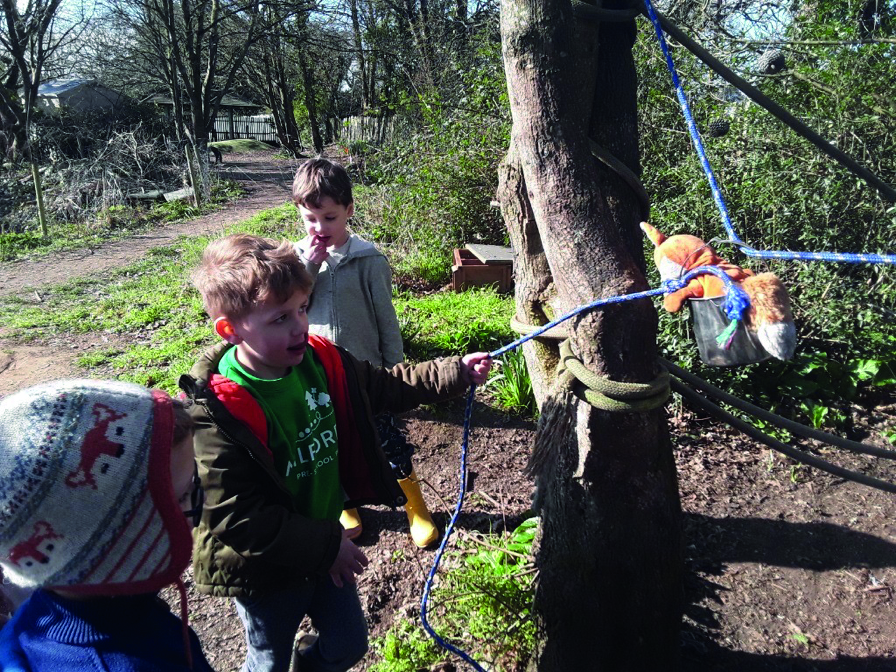 The children talked about what resources they needed and decided to use a paracord washing line and a shopping basket from the home corner. They knew that they needed to attach the paracord to a high point and opted for the top of a play loft where Sarah secured it with a timber hitch.
The children talked about what resources they needed and decided to use a paracord washing line and a shopping basket from the home corner. They knew that they needed to attach the paracord to a high point and opted for the top of a play loft where Sarah secured it with a timber hitch.
They tried sending the basket down their makeshift zip line. It worked, but the basket only moved slowly. ‘The children soon realised that the basket would only travel at one speed because the zip line was at one height. One of the boys suggested that it needed to be higher and that we should run the zip line from a tree because the trees are taller,’ recalls Sarah. ‘This led to the children talking about whether the basket would travel faster if it was higher. So it was decided that we would test this out at our Forest School the next morning, which they were excited to try.’
The next day, the big decision was which tree to use for the zip line, and the group set about risk-assessing an appropriate area. There are a lot of trees at Forest School that children use for climbing, but they considered what would happen if someone caught their foot in the zip line and it was decided that this would be unsafe. Instead, the children decided to focus on choosing a tree in an area where they do not climb and there was previously a parachute shelter erected, so there were already places to affix the zip line. Instead of the lighthouse keeper's lunch, the children chose to sit the Forest School toy fox – which they hold to give feedback during reflection time – into the basket.
‘I tied the zip line to the tree for the children and I gave them the other end to hold,’ says Sarah. ‘We didn't want to fix that end to something because we wanted to put the basket on the line. So one of the children stood on the ground holding the zip line. The fox travelled super-quick because the zip line was a steep drop down from the tree.’
Sarah supported the children to problem solve and work out how they could slow down the fox's descent. It was suggested that the child should stand on a cable drum so that the end of the line was higher and not as steep. This made it move a little slower. Then it was decided that they needed an adult to hold the end up to make it even higher, which worked well.
‘Children realised that how fast the fox travelled depended on the angle of the rope,’ says Sarah. ‘At times it was going too fast, which made the fox fall out of the basket, so we talked about how we could stop it falling out of the basket by making the line less steep and slowing it down.’
CHANGING PLANS
- The children decided that they wanted the fox in the basket to move up and down the line, but all they could do was control the angle of the drop. ‘One of the children suggested that we could tie a rope to the basket and pull it along the paracord. So it moved from being a zip line to a pulley system,’ says Sarah.
- Another child chose to swap the basket for a cooking pot.
- Children had been observing birds nesting. They decided to collect natural materials – leaves, moss, grass, twigs – put them in the pot and transport them to the tree along the pulley system. This led to them talking about how birds make their nests and why they build them in trees.
- Instead of an adult holding the end of the rope, children decided to tie the loose end to another tree.
WHAT THEY GAINED
Experimenting with the zip line allowed the children to pose and test out various hypotheses and be hands-on with mathematical and scientific concepts, such as angles, trajectory and speed. ‘Children demonstrated great turn-taking and sharing as they pulled the pot along the paracord to the tree and back,’ says Sarah. ‘They also showed excellent problem-solving and decision-making.’
Through their investigations, children used their gross motor skills when pulling the basket along the line and developed their fine motor skills by manipulating the paracord, practising to tie knots and threading it through the basket and pot handles.
The investigations have inspired Sarah to invest in a pulley system with a wheel for the children to use. She is also looking into training on how to rig up a zip line that the children could actually ride on themselves during Forest School sessions.
Book corner
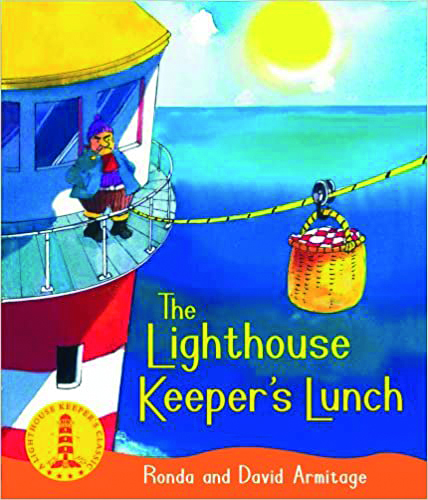 The Lighthouse Keeper's Lunch by Ronda and David Armitage
The Lighthouse Keeper's Lunch by Ronda and David Armitage
Once there was a lighthouse keeper who loved his food. But seagulls started stealing his tasty treats as they travelled along the zip line to his lighthouse…
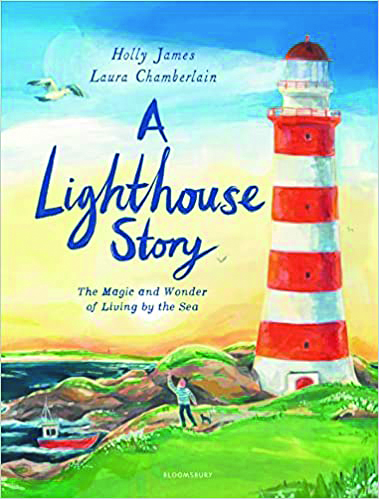 A Lighthouse Story by Holly James and Laura Chamberlain
A Lighthouse Story by Holly James and Laura Chamberlain
A cosy story filled with facts about how lighthouses work – including why lighthouses were created and how the light travels so far.
 Nest by Jorey Hurley
Nest by Jorey Hurley
With simple text and beautiful illustrations, this picturebook follows a baby bird through the seasons from birth to its first flight and finding a friend.
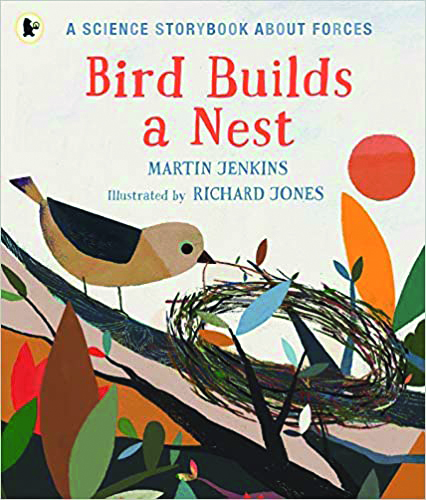 Bird Builds a Nest: A science storybook about forces by Martin Jenkins and Richard Jones
Bird Builds a Nest: A science storybook about forces by Martin Jenkins and Richard Jones
Bird is building her nest – this science story book introduces children to forces and the concept of pushing and pulling.
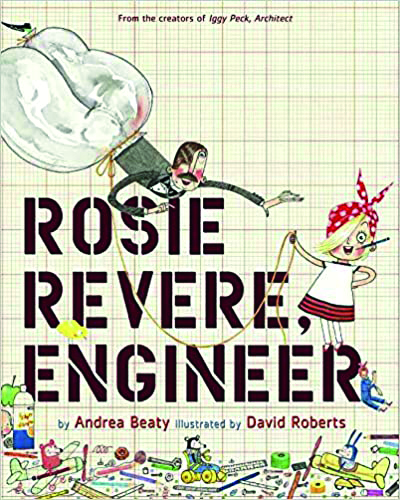 Rosie Revere, Engineer by Andrea Beaty and David Roberts
Rosie Revere, Engineer by Andrea Beaty and David Roberts
A charming, witty book about pursuing a passion.
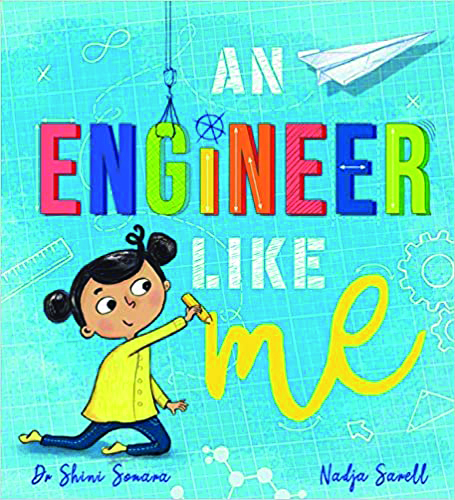 An Engineer Like Me by Dr Shini Somara and Nadja Sarell
An Engineer Like Me by Dr Shini Somara and Nadja Sarell
Zara is curious about everything! Travelling around the city with her gran, she sees all kinds of fascinating things.
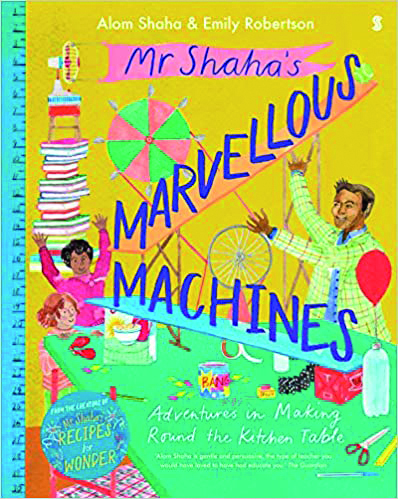 Mr Shaha's Marvellous Machines: Adventures in making round the kitchen table by Alom Shaha and Emily Robertson
Mr Shaha's Marvellous Machines: Adventures in making round the kitchen table by Alom Shaha and Emily Robertson
Use this book for inspiring engineering projects you can tackle with recycled materials and household objects.









